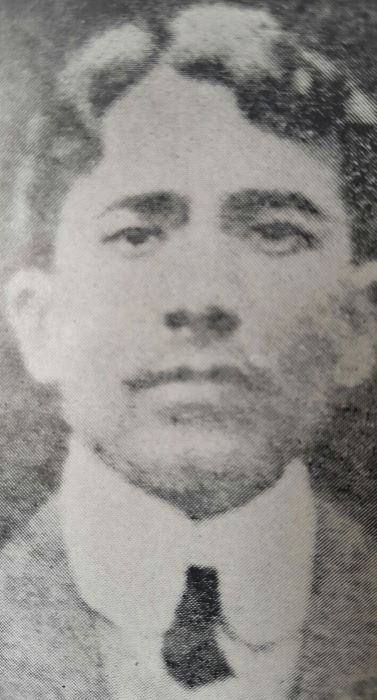PERSONAL INFORMATION
Names earned: Lion-hearted national hero
Profession(s): Pro-independence activist, Revolutionary
Known for: Assassinating the British official William Hutt Curzon Wyllie
Date of Birth: Source 1: 18 February 1883 (Sunday) Source 2: 18 September 1883 (Tuesday)
Birthplace: Amritsar, Punjab, British India (now India)
Age (at the time of death): Source 1: 26 Years Source 2: 25 Years
Zodiac sign: Source 1: Aquarius Source 2: Virgo
Nationality: British Indian
Hometown: Amritsar, Punjab
Religion: Hindu
Caste: Khatri
Check Out Other Celebrities Biography
- mahika sharma actress biography
- upasana kamineni biography
- arjun kapoor biography
- ajay piramal biography
- shagun pandey biography
EDUCATION
School: MB Intermediate College, Amritsar
College/University: • Government College University, Lahore, Pakistan • University College, London
Educational Qualification: Graduate
PHYSICAL STATISTICS
Eye Colour: Black
Hair Colour: Black
FAMILY & RELATIONSHIPS
Marital Status (at the time of death): Unmarried
Parents: Father – Dr. Ditta Mal Dhingra (civil surgeon)
Siblings: Brother(s) -6 • Biharilal Dhingra • Chamanlal Dhingra • Kundanlal Dhingra • Mohanlal Dhingra • Chunilal Dhingra • Bhajanlal Dhingra Sister -1 • Kaki Rani
OTHER INFORMATION
Date of Death: 17 August 1909
Place of Death: Pentonville Prison, London, England
Death Cause: Execution by hanging
Other Relatives: Grand niece – Leena Dhingra (author, actor)
INTERESTING BACKGROUND INFORMATION
Madan Lal Dhingra was born into an affluent and educated family in Amritsar, Punjab, during British India. His father, a chief medical officer honored with the title of Rai Saheb by the British government, emphasized education, as evidenced by his sons who pursued studies abroad. This privileged upbringing, however, did not shield Madan from the harsh realities of his homeland; rather, it ignited within him a burgeoning interest in the nationalist movement. During his time at Government College University in Lahore, he became increasingly aware of the socio-political issues affecting his country, particularly the plight of the impoverished and the oppressive economic conditions that prevailed. His academic pursuits sparked a commitment to Swaraj, or self-governance, and inspired him to adopt the Swadeshi movement as a solution to the suppression of local industries by colonial policies.
Dhingra’s activism was evident early on, culminating in a significant student protest in 1904 against the use of imported British cloth for college blazers. His defiance led to his dismissal from college, an act that his father sought to overturn, urging him to apologize to the authorities—a request Dhingra steadfastly refused. This act of rebellion laid the groundwork for a series of events that would see him distanced from his family, particularly after the 1905 partition of Bengal angered him profoundly. His political convictions led his father to publicly disown him through newspaper advertisements, a rupture that would change the course of Dhingra’s life. After a brief and tumultuous stint working as a clerk and later as a factory laborer, both of which ended in dismissal due to his insubordination, he found himself in Bombay, taking on low-paying jobs while grappling with the alienation from his family.
In 1906, encouraged by his elder brother Dr. Bihari Lal, Dhingra embarked on a journey to London to further his studies in mechanical engineering at University College London. There, he became immersed in revolutionary circles, meeting influential figures like Vinayak Damodar Savarkar and Shyamji Krishna Varma at the India House, a hub for Indian nationalists. His intense patriotism quickly earned him a prominent place within the group, and he aligned himself closely with Savarkar’s ideologies. Dhingra also became a member of the Abhinav Bharat Society, a secret organization committed to Indian independence, where he honed his skills, including training at a shooting range in Tottenham Court Road.
Stirred by a desire to take direct action against British rule, Dhingra initially planned to assassinate Lord Curzon, the former Viceroy of India, and Sir Joseph Bampfylde Fuller, an official instrumental in the partition of Bengal. However, fate intervened when he arrived late to a meeting where they were present. Redirecting his intentions, he set his sights on William Hutt Curzon Wyllie, a prominent political figure and the head of the secret police conducting surveillance on India House. On July 1, 1909, at an event organized by the National Indian Association, Dhingra executed his plan, shooting Curzon Wyllie five times, which killed him instantly, while inadvertently injuring Dr. Cawas Lalcaca, who attempted to intervene. Arrested immediately, Dhingra faced trial at the Old Bailey, where he famously refused to acknowledge the court’s authority and expressed pride in his actions for his motherland. Despite being denied a defense counsel, he asserted his indifference to the potential death sentence, famously stating, “Thank you, my Lord. I don’t care. I am proud to have the honour of laying down my life for the cause of my motherland.”
Following his execution, Dhingra’s legacy continued to inspire generations of revolutionaries, including Bhagat Singh and Chandra Shekhar Azad. Despite being denied traditional Hindu last rites, his influence endured, culminating in the posthumous discovery of his coffin in 1976 during the search for another revolutionary’s remains. His body was returned to India, where it was honored with a tribute that drew national leaders and citizens alike. The Indian government later commemorated Dhingra by issuing a postage stamp in 1992, and his memory was further honored with a memorial inaugurated in 2021 on the anniversary of his death. His life and sacrifice were poignantly captured in the book “Exhumation: The Life and Death of Madan Lal Dhingra,” penned by his grand-niece, ensuring his legacy as a symbol of resistance and patriotism within the annals of Indian history.
—
Note: All biographical information compiled from publicly available sources.
